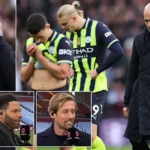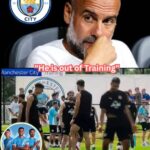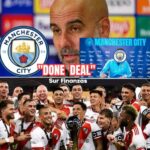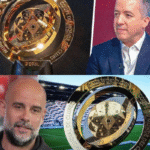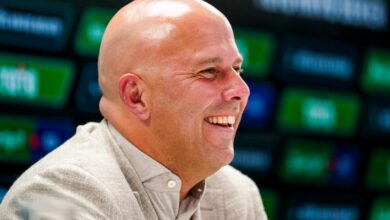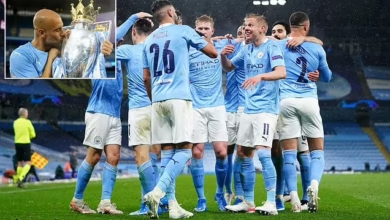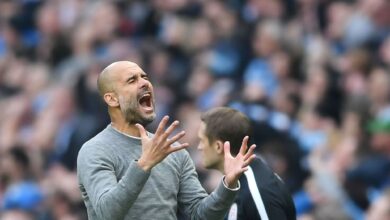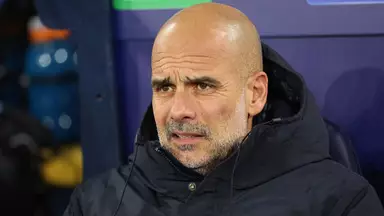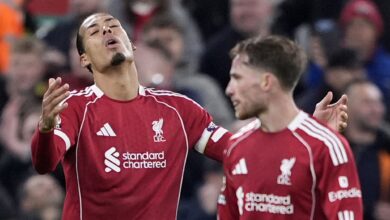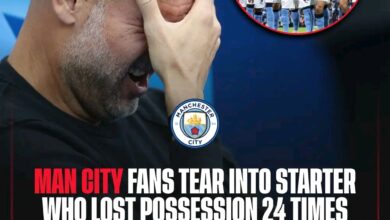Manchester City Face Major Setback as Rising Star Suffers Ankle Injury in FIFA Club World Cup
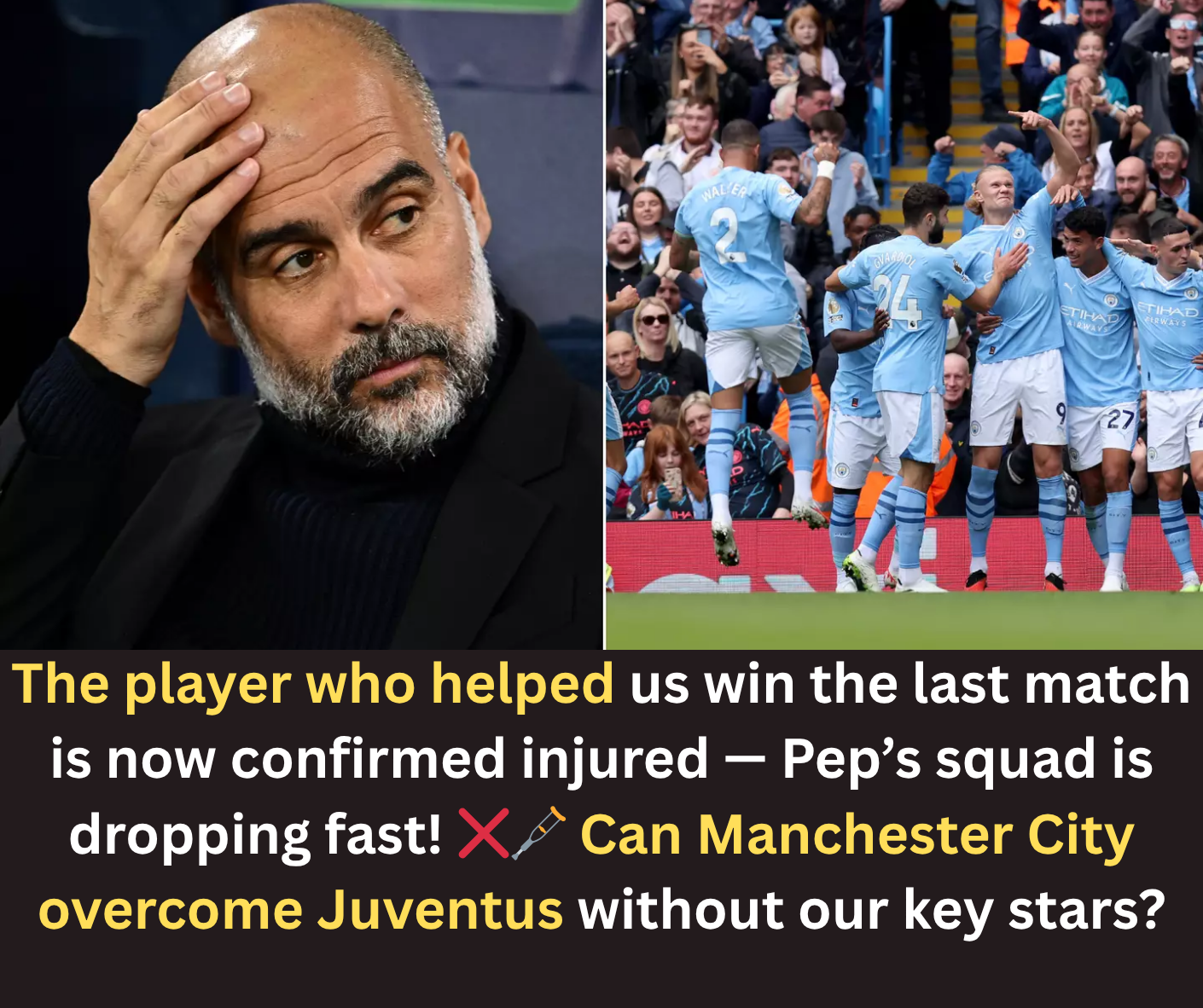
Manchester City’s participation in the FIFA Club World Cup has taken an unexpected turn for the worse, with one of their most promising young talents now facing a potential extended period on the sidelines. Claudio Echeverri, the 19-year-old Argentine midfielder who has been making waves since his arrival at the Etihad Stadium, was spotted navigating the club’s training facilities on crutches while wearing a protective boot following an ankle injury sustained during City’s commanding 6-0 victory over Al Ain on Sunday.
The sight of Echeverri hobbling around on crutches has sent shockwaves through the Manchester City camp, particularly given the timing of the injury and its potential implications for both the player’s immediate future and the club’s tactical plans for the remainder of the tournament. According to reports from ESPN, the young midfielder is now expected to miss City’s crucial Group G decider against Italian giants Juventus, a match that could determine the trajectory of their Club World Cup campaign.
The Injury Incident: A Moment That Changed Everything
The injury occurred during what should have been a celebratory moment for both Echeverri and Manchester City. The 6-0 demolition of Al Ain represented everything that Pep Guardiola’s side had hoped to achieve in their Club World Cup opener – a statement of intent that showcased their depth, quality, and tactical superiority on the global stage. For Echeverri personally, the match had begun as something of a fairy tale, with the teenager marking his competitive debut for the club by scoring a magnificent free-kick that demonstrated exactly why City had been so eager to secure his services.
The goal itself was a thing of beauty, showcasing the technical ability and composure that had caught the attention of City’s scouts during his time with River Plate. Echeverri’s free-kick found its way into the top corner with the kind of precision and power that belied his tender years, sending a clear message that he belonged at this level and was ready to contribute meaningfully to City’s pursuit of silverware.
However, the celebrations were short-lived. Echeverri’s involvement in the match came to an abrupt end at half-time, with the decision initially appearing to be a precautionary measure designed to manage his minutes and protect a young player who was still adapting to the intensity of elite European football. What seemed like prudent squad rotation has now revealed itself to be something far more concerning, with the ankle injury proving significant enough to require crutches and a protective boot.
The Broader Implications for Manchester City’s Squad Planning
The timing of Echeverri’s injury could hardly be worse from Manchester City’s perspective. The Club World Cup represents an opportunity for Guardiola to assess his squad depth and give valuable game time to players who might not otherwise feature regularly in the Premier League or Champions League. For a young player like Echeverri, these matches serve as crucial stepping stones in his development, providing him with the chance to prove his worth on an international stage while adapting to the tactical demands of Guardiola’s system.
The injury also raises questions about City’s squad management and the physical demands being placed on their players during what is already a congested fixture schedule. The Club World Cup, while prestigious, represents an additional burden on players who are already dealing with the intensity of domestic and European competition. For young players in particular, the step up from South American football to the rigorous demands of playing for one of Europe’s elite clubs can be substantial, and injuries like this serve as a reminder of the physical toll that such transitions can exact.
From a tactical standpoint, Echeverri’s absence will force Guardiola to reconsider his options for the crucial match against Juventus. The Argentine had been viewed as a potential wildcard in City’s attacking arsenal, offering a different dimension to their play with his creativity, set-piece ability, and willingness to take risks in the final third. His injury means that Guardiola will need to rely more heavily on established stars like Phil Foden and Bernardo Silva, or look to other members of his squad to fill the void.
Competition for Places: The Challenge Facing Echeverri
Even without the injury, Echeverri was facing a significant challenge in establishing himself as a regular in Manchester City’s first team. The arrival of summer signing Rayan Cherki has further intensified the competition for places in City’s attacking midfield positions, creating a situation where every training session and match appearance takes on added significance for players looking to break into Guardiola’s preferred starting eleven.
The competition at City is particularly fierce in the creative midfield positions, where established internationals like Phil Foden and Bernardo Silva have set extraordinarily high standards. Both players have proven themselves capable of performing at the highest level consistently, contributing crucial goals and assists while also fulfilling the defensive responsibilities that Guardiola demands from his midfielders. For a young player like Echeverri, breaking into this group requires not just talent, but also patience, dedication, and the ability to make the most of limited opportunities when they arise.
The injury setback is particularly frustrating given how well Echeverri had started to adapt to life at Manchester City. His goal against Al Ain suggested that he was beginning to find his feet in Guardiola’s system and was ready to make meaningful contributions when called upon. The fact that he managed to score such a spectacular goal in his competitive debut indicated that he possessed both the technical ability and the mental strength to perform under pressure at the highest level.
The Journey from River Plate to Manchester
Echeverri’s path to Manchester City has been anything but straightforward, involving a complex transfer arrangement that saw him officially join the club in January 2024 while remaining on loan at River Plate until January 2025. This arrangement allowed the young midfielder to continue his development in familiar surroundings while ensuring that City secured his services before other European clubs could make their move.
During his extended loan period at River Plate, Echeverri continued to impress with his performances in Argentine football, further justifying City’s decision to invest in his potential. The loan arrangement also allowed him to gain valuable experience in high-pressure situations, including continental competitions, which has undoubtedly contributed to his ability to adapt quickly to the demands of playing for one of Europe’s most successful clubs.
His official debut for Manchester City came in the FA Cup final against Crystal Palace, a match that ended in disappointment for City as they suffered a 1-0 defeat. Despite the result, Echeverri’s inclusion in such a high-profile match demonstrated the faith that Guardiola and his coaching staff had in the young player’s ability to contribute in crucial moments.
Medical Concerns and Recovery Timeline
The sight of Echeverri on crutches wearing a protective boot has naturally raised concerns about the severity of his ankle injury and the potential timeline for his return to action. Ankle injuries can be particularly troublesome for footballers, especially those whose game relies heavily on quick changes of direction, acceleration, and the ability to strike the ball cleanly from various positions.
The fact that Echeverri was unable to participate in training sessions on both Monday and Tuesday following the Al Ain match suggests that the injury is being taken seriously by City’s medical staff. The use of crutches and a protective boot indicates that the club is taking a cautious approach to his recovery, prioritizing long-term health over short-term availability.
Modern sports medicine has made significant advances in the treatment of ankle injuries, with rehabilitation programs designed to not only heal the immediate damage but also strengthen the surrounding muscles and ligaments to prevent future problems. However, the recovery process can be unpredictable, particularly for young players whose bodies are still developing and adapting to the physical demands of professional football.
Impact on City’s Club World Cup Ambitions
Manchester City’s participation in the FIFA Club World Cup represents more than just another trophy opportunity – it’s a chance to cement their status as one of the world’s premier football clubs by conquering a tournament that brings together the best teams from every continent. The absence of a player like Echeverri, while not necessarily decisive, does limit Guardiola’s tactical options and reduces the squad depth that has been crucial to City’s success in recent seasons.
The match against Juventus takes on added significance in this context, as it will likely determine City’s path through the knockout stages of the tournament. Juventus, despite their recent struggles in Serie A, remain a formidable opponent with a rich history in international competition and the tactical nous to trouble even the most accomplished teams. City will need to be at their best to secure the result they need, and having a fit and available Echeverri could have provided additional options in attack.
The injury also highlights the challenges that clubs face when participating in expanded international tournaments. The FIFA Club World Cup, in its current format, places additional demands on players who are already dealing with packed domestic schedules. For clubs like Manchester City, who are competing on multiple fronts throughout the season, managing player fitness and avoiding injuries becomes an increasingly complex challenge.
Looking Ahead: Opportunities and Challenges
Despite the disappointment of his injury, Echeverri’s long-term prospects at Manchester City remain bright. The young Argentine has already demonstrated that he possesses the technical ability and mental strength to perform at the highest level, and his goal against Al Ain will have given him confidence that he can make a meaningful contribution to the team’s success.
The injury setback, while frustrating, is unlikely to derail his development trajectory significantly. Many successful footballers have overcome similar setbacks early in their careers, using the time away from action to work on other aspects of their game and return stronger than before. For Echeverri, the recovery period could provide an opportunity to continue adapting to Guardiola’s tactical system, studying the game from the sidelines and preparing for his eventual return to action.
From Manchester City’s perspective, the injury serves as a reminder of the importance of squad depth and the unpredictable nature of football. While losing Echeverri for the Juventus match is undoubtedly a blow, it also provides opportunities for other players to step up and prove their worth. This is particularly relevant for City’s other young players, who may now find themselves with additional chances to impress Guardiola and establish themselves in the first-team picture.
The Bigger Picture: Youth Development at Manchester City
Echeverri’s injury and the circumstances surrounding it also reflect broader themes about youth development at elite football clubs. Manchester City has invested heavily in their academy and youth recruitment in recent years, recognizing that developing young talent is crucial both for sporting success and financial sustainability. However, integrating young players into the first team while managing their physical and mental development remains one of the most challenging aspects of modern football management.
The pressure on young players at clubs like Manchester City is immense, with expectations high and opportunities limited. Every injury, every poor performance, and every missed chance can have significant implications for a player’s career trajectory. For Echeverri, the key will be maintaining his confidence and continuing to work hard during his recovery period, ensuring that he’s ready to make the most of his next opportunity when it arises.
Conclusion: A Temporary Setback in a Promising Career
While the sight of Claudio Echeverri on crutches represents a concerning development for Manchester City, it’s important to view this setback within the broader context of what is likely to be a long and successful career. The young Argentine has already shown that he possesses the talent and mentality to succeed at the highest level, and this injury, while unfortunate, is unlikely to derail his long-term prospects.
For Manchester City, the challenge now is to manage his recovery effectively while continuing to pursue their objectives in the Club World Cup and beyond. The depth and quality of their squad should allow them to cope with his absence in the short term, while the experience of dealing with this setback could ultimately make both the player and the club stronger.
As the Club World Cup continues and the season progresses, all eyes will be on Echeverri’s recovery and his eventual return to action. When he does return, he will have learned valuable lessons about the physical demands of elite football and the importance of managing his body throughout what promises to be a long and successful career. For now, though, Manchester City must adapt to his absence and find other ways to achieve their ambitious goals on the global stage.
